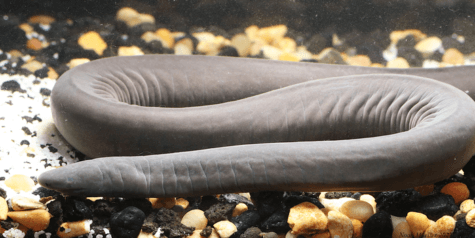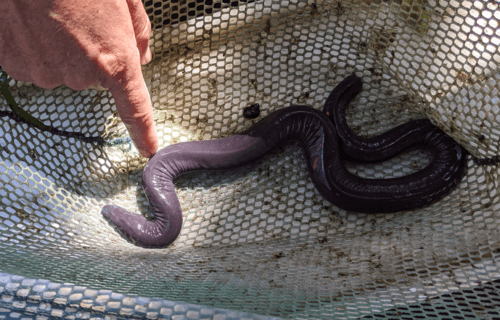GAINESVILLE, Fla. — Slithering creatures are nothing new to Florida, but a weird, noodle-like amphibian is actually turning a lot of heads in Miami. Researchers with the Florida Museum of Natural History say the appearance of a caecilian in the Tamiami Canal is the first reported case of such an animal discovered in the wild within the United States.
Caecilians are legless amphibians which resemble a worm or snake, but are actually a completely different group of amphibians all together. Scientists add they’re also completely distinct from frogs, toads, salamanders, and newts. What makes this find so interesting is that this particular creature, the Rio Cauca caecilian, has never been seen anywhere above southern Mexico.
“This was not on my radar,” says Coleman Sheehy, Florida Museum’s herpetology collection manager, in a media release. “I didn’t think we’d one day find a caecilian in Florida. So, this was a huge surprise.”
The Rio Cauca, or Typhlonectes natans to scientists, is a native of Colombia and Venezuela. Pronounced just like “Sicilians,” caecilians range anywhere from a few inches to five feet-long in size. Although, they hunt for small animals for food, study authors say there’s nothing to really worry about if caecilians have somehow migrated to the U.S.
“Very little is known about these animals in the wild, but there’s nothing particularly dangerous about them, and they don’t appear to be serious predators,” Sheehy adds. “They’ll probably eat small animals and get eaten by larger ones. This could be just another non-native species in the South Florida mix.”
A mystery in the water

Sheehy first learned of a caecilian in the Florida waters after local wildlife officers sent him a picture of a strange, legless, eel-like animal in 2019. Officials found the two-foot long caecilian in shallow water during a survey of the canal.
Unfortunately, the Rio Cauca later died in captivity and was sent to the Florida Museum for examination. Since that time, Florida officials have discovered many more caecilians in the Tamiami (C-4) Canal.
“At this point, we really don’t know enough to say whether caecilians are established in the C-4 Canal,” Sheehy explains. “That’s what we want to find out.”
In general, caecilians are very reclusive. Many varieties spend their entire lives underground however, species like the Typhlonectes natans live in fresh water. They also have very poor eyesight, as their name literally translates to “blind ones.”
Are the caecilians someone’s discarded pets?
So how did these amphibians find themselves so far north? Southern Mexico, is the northernmost area that land-dwelling caecilians live. Other varieties stay in the tropical parts of Africa and Southeast Asia. Although ancient caecilian fossils have been discovered in the American Southwest, dating back 170 million years, there have never been caecilians living this far north in modern times.
The one theory scientists are running with now is that they may have been someone’s pets. Typhlonectes natans are actually the most common variety of caecilians that people keep as a pet. They can both survive and reproduce in captivity and are common attractions at aquariums.
It’s possibly these amphibians were let loose into the canal by a former owner. Now, they’re likely breeding in the canal, which is very much like their native environments down south.
“Parts of the C-4 Canal are just like that,” Sheehy concludes. “This may be an environment where this species can thrive.”
The findings appear in the journal Reptiles & Amphibians.
